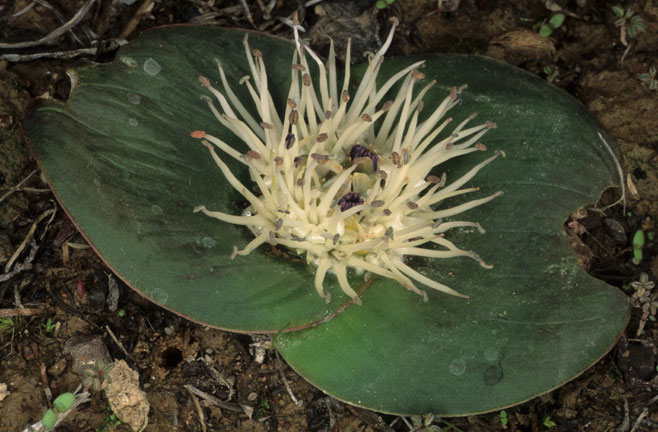|
Massonia depressa Life
> eukaryotes >
Archaeoplastida >
Chloroplastida
>
Charophyta > Streptophytina > Plantae (land plants)
> Tracheophyta (vascular plants) > Euphyllophyta > Lignophyta (woody plants)
> Spermatophyta (seed plants) > Angiospermae (flowering
plants) > Monocotyledons > Order: Asparagales
> Family: Asparagaceae > Genus:
Massonia
 |
| Massonia depressa, Nieuwoudtville,
Northern Cape, South Africa. [photo
H.G.
Robertson, Iziko ©] |
Ecologicial interactions
Pollinators
Johnson et al. (2001) showed that Massonia
depressa is pollinated by rodents including:
Adaptations to rodent pollination are as follows:
- flowers are situated at ground level and are not brightly coloured;
- the nectar is situated in a bowl-shaped chamber formed by the fused
bases of the anthers;
- nectar is produced in large quantities;
- nectar secretion increased in the early evening, reaching its peak
around midnight; and
- nectar is highly viscous, having a jelly-like consistency, presumably to
discourage robbing by insects (try sucking up jelly with a straw - its not
easy).
Publications
- Johnson SD, Pauw A, Midgley J. 2001. Rodent pollination in the African
lily Massonia depressa (Hyacinthaceae). American Journal of Botany
88(10): 1768-1773.
|
